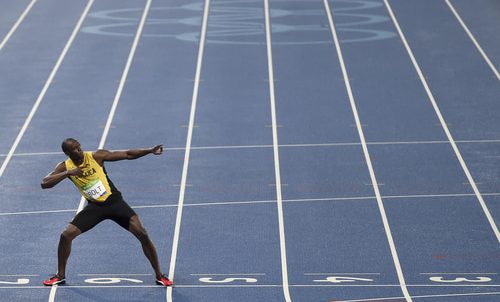 Recently, Usain Bolt filed a US trademark application for his signature ‘Lightning Bolt’ pose, seeking protection for a large range of goods and services from the typical merchandising goods. This includes clothing, bags, jewellery and sunglasses, right through to the less typical restaurants and bars.
Recently, Usain Bolt filed a US trademark application for his signature ‘Lightning Bolt’ pose, seeking protection for a large range of goods and services from the typical merchandising goods. This includes clothing, bags, jewellery and sunglasses, right through to the less typical restaurants and bars.
Whilst this story has been very popular with the press, Usain Bolt is already the proprietor of this famous pose in a variety of countries since 2009, having successfully filed trademark applications in Jamaica, Brazil, China, Canada, Australia and even the EU and UK (as comparable trademarks) to name a few. However, this is the first time he has sought to register the mark in the US and, if successful, this will help Bolt protect, control and monetize his pose in the US – which is likely to be a core territory for him and his team.
It is also noted that the US application relies on the existing Jamaican registrations as a basis for foreign use. Typically, in US applications, the applicant is required to file evidence of use of the mark in the US before it can register. However, the bonus in relying on the existing Jamaican registrations is that Bolt can forego this standard requirement to prove use in the US and, assuming the application is not objected to or opposed, obtain registration. Whilst evidence of use in the US will be required 6 years after registration, this gives Bolt plenty of time to put his plans into action.
Assuming there are no conflicting applications or registrations in this case, previously accepted applications for famous figures and poses in the US indicate that this application should also register without issue. Examples of existing registrations for figurative poses include Michael Jordan’s basketball dunk (the ‘Jumpman’) and Bruce Lee’s flying kick pose.
Michael Jordan has been extremely successful in utilizing his brand and signature pose following his collaboration with Nike and is likely to be used as an example for all athletes when looking to monetize and market themselves as brands.
In this regard, whilst seeking to protect a famous pose is clearly not new, given the recent press around these applications, it will be exciting to see if other athletes are encouraged to try and monetize their public image in a similar way. That being said, there are few examples of well-known athletes who would be instantly recognizable from a silhouette pose. One example that springs to mind is Mo Farah and his ‘Mobot’. Brief searches have identified EU and UK trademarks for ‘MO FARAH’ and ‘MOBOT’ as word marks, but a figurative mark has not (yet) been filed.
On a final note, interestingly, the application does not cover digital products or NFTs, for example, so Bolt may have missed a trick in not seeking to protect the pose for such items. However, this is likely because the application is based on existing registrations in Jamaica, before such items existed, in order to remove the need to provide evidence of use.
Whether a subsequent application for goods within the metaverse or NFTs follows in the US, or elsewhere in the near future, we will have to wait and see. It will also be interesting to see whether the famous poses already registered seek to expand their protection by looking to register in relation to such digital goods and services, if they have not already done so already.
These recent filings have certainly stirred up an interest for figurative applications, so the future is wide open.
Written by Charlotte Wilding, Partner & Head of Trademarks at Wedlake Bell











